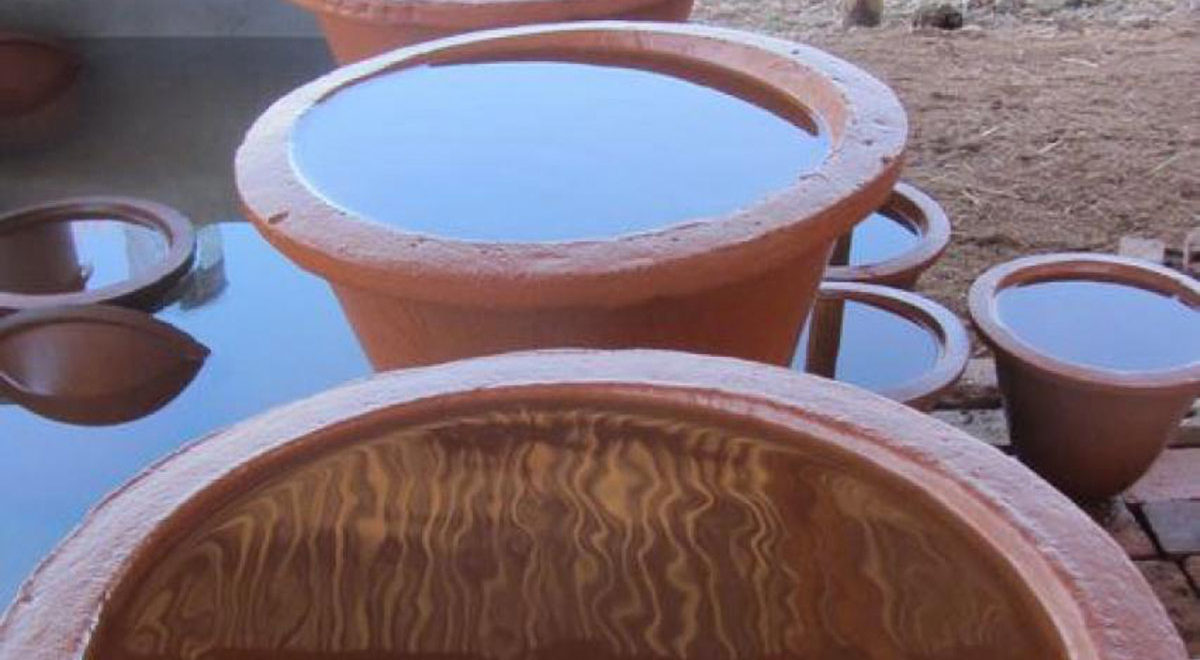
One popular treatment approach, known as a colloidal silver-enhanced ceramic water purifier (CWP), clearly embodies the low cost and locally-focused keys to success of an Ecological Handprint. How do ceramic water purifiers work? Pots made of clay and sawdust are fired at a very high temperature, creating a porous ceramic matrix that can be used as a simple water filter. This filter is then treated with colloidal silver (sometimes marketed as silver nanotechnology), a highly effective bactericide used worldwide to purify water. The silver kills waterborne pathogens like Vibrio cholera and pathogenic strains of Escherichia coli, while causing no known side effects for those who ingest the treated water.

Before entering the filter, large particles are strained at the surface. As the water passes by gravity through the treated ceramic filter, medium particles (<0.6 microns) are lodged in the pore structure, while the silver nano particles disinfect the water. The clean, safe water is then collected in a lower reservoir and made accessible by a spigot for drinking, cooking, and other uses.
The PureMadi program has field-tested silver-treated ceramic filters for water treatment in Ha-Mashamba, Limpopo Province, South Africa. Like other Ecological Handprints, a large part of PureMadi’s success lies in its brilliant use of locally available materials and labor — in this case, clay, sawdust, water, and local potters. They’ve also developed the MadiDrop, a water purification tablet made out of the same silver-treated ceramic.
Promising new hybrid approaches to water treatment are also emerging. Take for example the Indian Institute of Technology’s effort to develop a low-cost nanoparticle water filtration system that combines microbe-killing capacity with the ability to remove chemical contaminants such as lead and arsenic. Arsenic poisoning is an especially serious problem in the Ganges Delta and effects over 100 million people worldwide.
LINKS TO ADDITIONAL SUCCESS STORIES AND RESOURCES CAN BE FOUND UNDER ABOUT ECOLOGICAL HANDPRINTS

